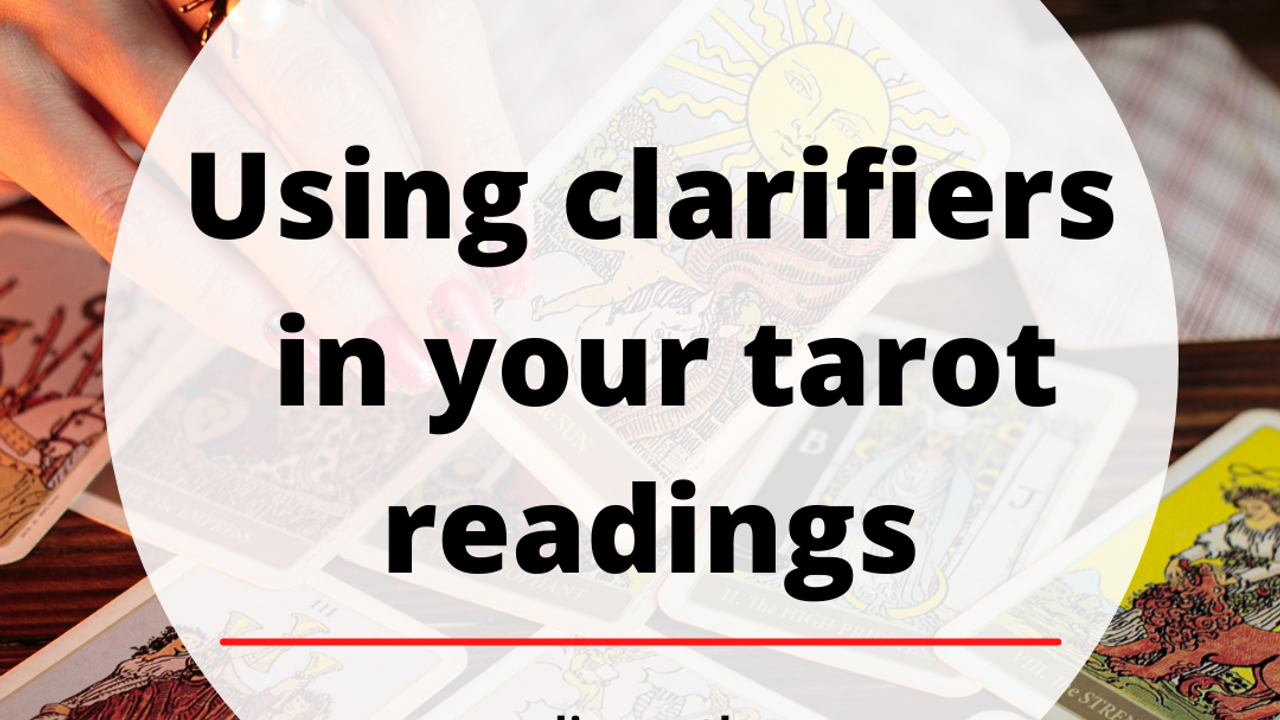Using clarifiers in your tarot readings

A common question I hear from tarot students is, “Should I be using clarification cards?”
And if so, how?
Clarification cards – or clarifiers as I like to call them – are additional cards that are pulled when the initial reading doesn’t feel like it’s giving a reader enough information.
Just describing this technique sounds benign and helpful. Why wouldn’t you want to get a little more information about a reading, right?
But talking about clarifiers is like opening a can of worms: This technique draws strong opinions on both sides of the fence about whether it’s necessary or useful.
My tarot practice has evolved over time, and I’m sure yours has too. (Or if you’re still new to tarot, trust me when I say it will – we all grow and adapt to our own ways of reading cards.)
Just as I used to use reversals, there was also a time I experimented with clarifiers.
But in the end, I found that clarifiers didn’t add much more to a reading than what was already on the table.
I also decided to push myself to work within the parameters of the spreads I was using, rather than relying on extra cards.
That latter statement reflects a point of contention among some readers who feel strongly against using clarifiers: They can be an easy way out of a challenging reading, and a way to avoid developing a sharper skillset to be able to work with what’s already in front of you.
In other words: Clarifiers should be used with skill and precision, not as a way to cheat out of a tough reading.
That can sound harsh, I know. But these are some of the views out there on this technique, and I think it’s important to reflect varied perspectives on it.
On one hand, I get why clarifiers can be seen as a cop-out sometimes. This is a technique that requires a lot of discipline to execute well. I don’t think it’s a good technique for beginners, though beginners are often drawn to it because it can feel like getting a second (or third, or forth) chance on a difficult interpretation.
But done poorly, clarifiers can lead to readers pulling way too many cards, to the point where half the deck is on the table.
There’s also a question of whether clarifiers are really necessary at all, or if it’s best to just to stick to the spread you started out with and leave it as it is.
While these questions might feel challenging to those who love clarifiers, I do think there’s merit in exploring these thoughts.
Several years ago I taught a couple of classes that included clarification cards as a technique. My intention was to show students different tarot reading techniques, encouraging them to experiment and see what felt most effective.
But those lessons backfired. Soon, I had some students on my hands who were pulling clarifier cards for everything – every reading, every spread, rather than just take their time to work through what was already there.
And that became a challenge for beginners, because they only felt more confused by the end of it – and confusion is the opposite of clarity.
That being said, some readers execute clarifier cards very well. But I’ve noticed that those who successfully adopt this technique use it sparingly, and have clear rules about when and how they will use clarifiers.
They also don’t pull many – usually not more than one, although I can’t say to know what every single tarot reader is up to out there.
I always recommend tarot readers to try different techniques to see what works, bearing in mind that these are techniques. They don’t all have to make it into your repertoire of tarot skills, and they won’t work for all readers.
But as I said earlier, I no longer recommend clarifiers for beginners as I feel there are other foundational concepts to grasp first: The imagery, the elements, and putting cards into proper context are all key beginner concepts for me, and those are the areas I have my students focus on first.
Once you’re comfortable piecing together readings from there, you might want to try a new technique – be it reversals, bigger tarot spreads, timing or predictions, or clarifiers to name a few.
But if you do choose to try out clarifiers, remember that the aim is to stay clear. If you find they’re adding more confusion to a reading, or you’re pulling way too many extra cards, just come back to the original reading at hand. Centre yourself, and work out what it is that not’s feeling right.
Don’t muddy the waters by adding a bunch of extra cards into the mix.
And remember that sometimes a tricky tarot reading doesn’t need a clarifier at all, just some troubleshooting.
Reflect on whether the question you’ve asked is unclear or indirect.
Reflect on your own skillset for the moment: Are there tarot cards you’re still getting accustomed to?
And reflect on the spread you’re working with: Is there a position that feels tricky to put into context?
More often than not, those are questions we need to look at first, before considering pulling a clarifier. Because if any of those components are off, then a clarifier won’t fix the reading.
Until next time,
Liz xo
p.s. If you're a student of tarot and you're in search of a beginner course that will show you exactly how to read tarot, while providing a supportive but challenging experience, my Tarot Foundations program is for you. Join here.
